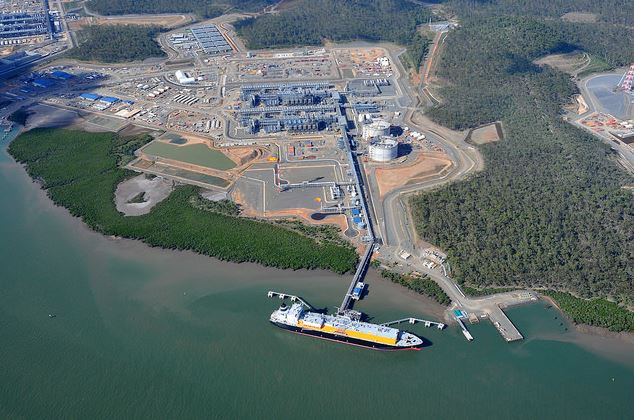Australian LNG exports hit a new record high in 2021, boosted by more shipments to China, South Korea, and Taiwan, according to EnergyQuest.
Based on shipping data, EnergyQuest estimates that Australian LNG exports reached 80.9 million tonnes (Mt) in 2021, rising 3.7 percent when compared to the 78 Mt exported in 2020, and also higher than the 77.6 Mt exported in 2019, before the pandemic.
Reflecting higher exports and stronger international energy prices, EnergyQuest estimates
that total 2021 LNG export revenue reached A$48 billion ($34.7 billion), up 25 percent from only A$36 billion in 2020.
EnergyQuest says the massive increase in export revenue takes Australia back to the record level achieved in 2019 prior to the pandemic.
Australia remained world’s largest LNG exporter
In 2021, Australia is again likely to rank as the world’s largest LNG exporter, according to the consultancy.
Australia’s 10 LNG projects have total production capacity of 89 million tonnes per annum (Mtpa), the world’s largest.
The other major global producer, Qatar, which does not release timely export statistics, currently has lower total capacity of 77 Mtpa.
However, Australia’s ranking is under threat from Qatar and also the USA.
Qatar plans to expand its capacity to 110 Mtpa by 2026. New LNG expansion in the USA, is likely to see Australia lose its top producer ranking in 2022, according to the US Energy Information Agency (EIA).
This will be an increasing challenge for Australian LNG producers wanting to contract new projects, or extend existing operations.
Most Australian LNG projects produced more in 2021 than in 2020. One highlight was that
the Shell-operated Prelude floating LNG project recommenced regular production from
early on the year and produced 2.2 Mt, the consultancy said.
However, it was shut down by the National Offshore Petroleum Safety and Environmental Management Authority (NOPSEMA) in late November due to safety concerns.
The only LNG projects with lower production in 2021 than 2020 were the Woodside-operated North West Shelf (NWS) (down 12 percent) and the Inpex-operated Ichthys project (down 8.6 percent), EnergyQuest said.
Lower Ichthys production was temporary but the continuing fall in NWS production due to
aging gas fields represents another challenge for Australian exports, it said.
China replaced Japan as the biggest LNG market
EnergyQuest estimates that Australian LNG projects delivered a total 80 Mt to customers
in 2021.
China replaced Japan as Australia’s largest LNG market in 2021, with estimated
deliveries of 32 Mt, up by 7.1 percent on 2020, it said.
Growing LNG sales to China reflect the rapid growth in Chinese natural gas demand as the economy has recovered from the pandemic and also the push to reduce air pollution in
major cities.
All Australian projects except Prelude delivered LNG cargoes to China. The two biggest
suppliers to China were the ConocoPhillips/Origin Energy APLNG project and the Shell-operated QCLNG project, the agency said.
LNG deliveries also grew to Korea and Taiwan. However, deliveries to Japan were down
9.3 percent on 2020, largely due to the expiry of Japanese contracts with the North West Shelf and Darwin LNG, it said.
The lost Japanese sales were effectively replaced by higher-price spot sales, the agency said.
Peak of Australian LNG production
It is likely that 2021 is close to the peak of Australian LNG production, according to EnergyQuest.
The biggest threats are not only increasing competition but also the natural decline in the gas fields feeding existing projects and the limited number of new projects, it said.
Two new LNG projects were announced in 2021: the Santos Barossa project to backfill
Darwin LNG and the Woodside Scarborough project. These projects are likely to produce first LNG in 2025 and 2026, respectively.
In the meantime, gas from the Bayu-Undan field supplying Darwin LNG is expected to be exhausted by around 2023, depending on the results of the current drilling program, the agency said.
At full capacity Scarborough will produce 8 Mtpa but by the time it is in full production, production from the NWS is likely to have declined by a similar amount, it said.
The best-case scenario would be that these two new projects bring Australian production
back up to around current production levels. They are unlikely to take it up to new levels, EnergyQuest said.
Reaching new levels would require new sources of gas to turn around the decline in the
North West Shelf, Australia’s largest LNG project, it said.

